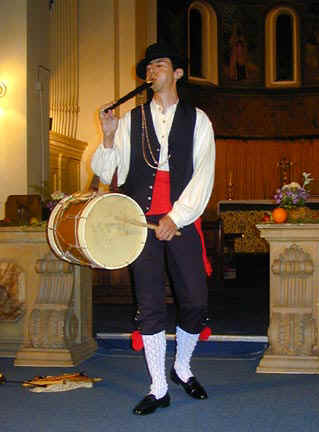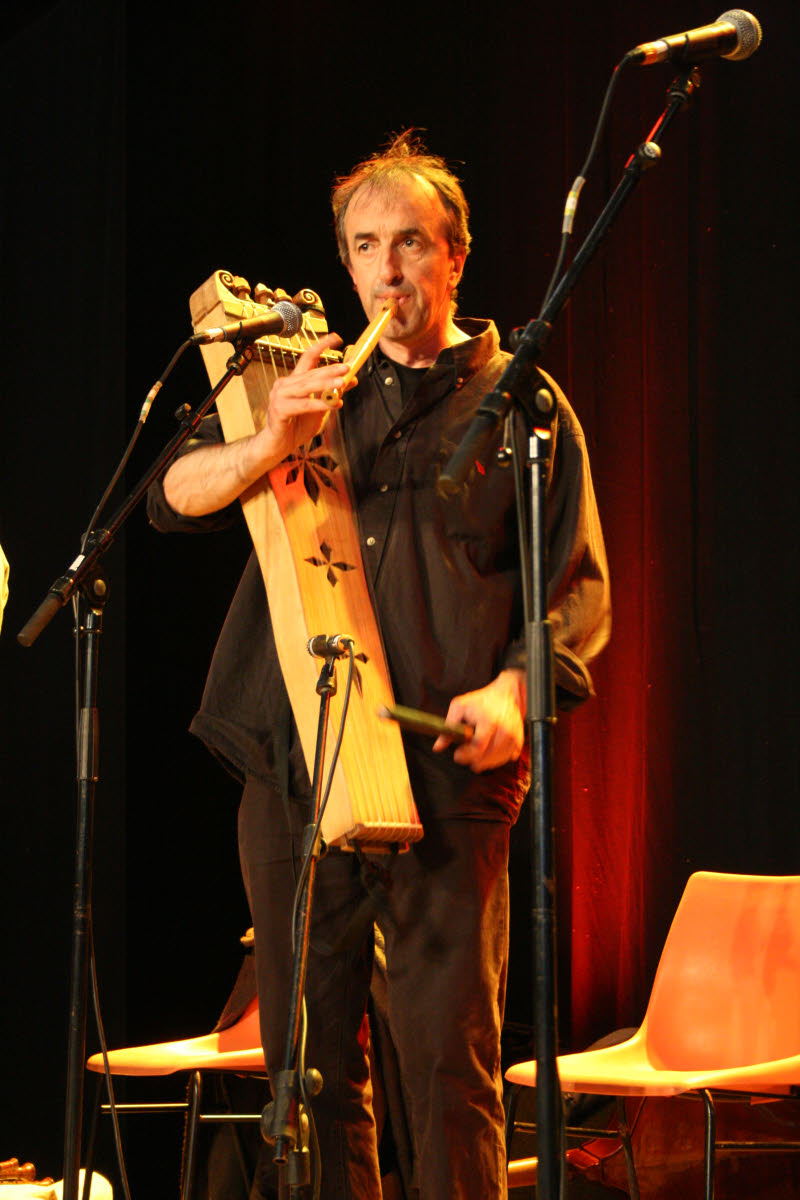Iberian Peninsula
The pipe and tabor appears in various guises throughout the Iberian Peninsular, and has a number of names, e.g flauta y tamboril, txistu, txirula, and flabiol y bombo

Flabiol y Bombo

Flabiolaires have a long history in Catalunya and Mallorca. Their tradition was constrained during the Franco period but, like English Tabor Pipe, has seen major growth in the late 20th Century.
Like the English Taborer, the Flabiolaire also plays for processions and dance, including the Bal de Baston. The Flabiol has five holes on the top of the pipe and two below. This gives the instrument great flexibility but requires great dexterity. A video from the Catalan Flabiol Festival in Arbucies can be seen on YouTube.
Basque Txistu
The Basque region on the borders of Spain and France have several mountain tabor pipe traditions, but the dominant form – the txistu – and the players – the txistulari – have become an expression of Basque identity.
Often played in consorts, the Txistu is a three hole pipe, with the intervals of Tone, Semitone and Tone (TST).

The txirula is closely related to the txistu and is often played with the string drum (Txun txun). Also from the Basque region, but more popular in the northern area.
Pipe and Tabor traditions in NE Portugal
Click here for an article on NE Portugal
Provence Galoubet
In the Provence region of France, there is a strong folk tradition of the Galoubet et Tambourin. The Galoubet is also a three hole pipe but with intervals of Tone, Tone, Tone (TTT). The Tambourin is a very deep instrument with a resounding tone and distinctive snare.

In addition to music for folk dance, the Galoubet also has a notable parlour music repertoire.
Fujara
Not strictly a Pipe and Tabor tradition, the Fujara is an overtone instrument, albeit a very long one. This Slovakian instrument can best be described as somewhere between a Tabor Pipe and a Didgeridoo. It has a mysterious tone and is quite unique. The length of the instrument makes playing in the usual manner impossible, so an extra length of pipe is included to take the breath from the mouthpiece up to the top of the pipe.

Central & South American Traditions
The Pipe and Tabor was introduced to Central and Southern America by the Spanish. It has become assimilated into many different traditions and cultures throughout the region.

